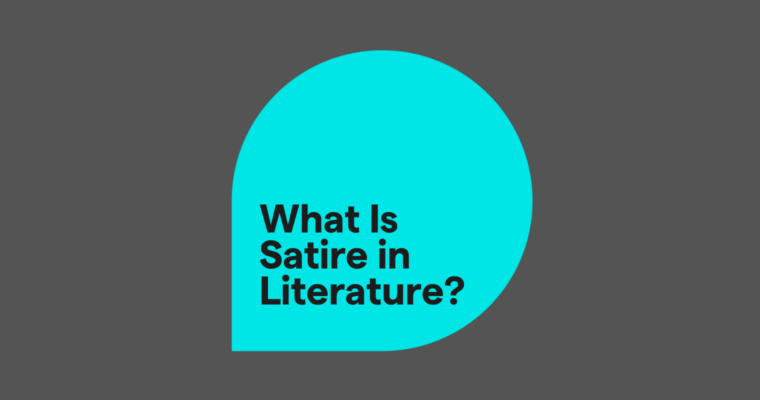
Key takeaways:
- Satire uses humor, irony, and exaggeration to criticize or mock societal issues, individuals, or institutions.
- Satire uses humor to make serious topics more approachable, aiming to expose flaws and encourage critical thinking.
- Satire appears across many forms of media, including literature, television, film, and online content.
Satire is both a literary device and a genre that uses exaggeration, humor, irony, or ridicule to highlight the flaws and absurdities of people and society. It often targets politics and social issues to provoke thought. With its roots in ancient times, satire has always been used to question authority and push for social change.
By understanding the various types of satire, we can better grasp how writers use it to entertain and illuminate important topics.
Table of contents
Satire compared to other literary devices
Types of satire
Satire can take many forms, each with a unique approach to critiquing human behavior, society, or politics. The three main types—Horatian, Juvenalian, and Menippean—are named after ancient satirists who shaped their respective styles.
| Type of satire | Definition | Modern example |
| Horatian satire | Lighthearted and witty; gently mocks social issues or human behavior to entertain and provoke thought. | The Simpsons uses humor to critique American family life, politics, and cultural norms. |
| Juvenalian satire | Harsh, biting, and serious; attacks corruption, hypocrisy, or moral failings with scorn or outrage. | Black Mirror critiques the dark side of technology and societal dependence on digital culture. |
| Menippean satire | Abstract and less structured; blends styles and genres to satirize flawed thinking, ideologies, or mental attitudes. | Fight Club explores themes of consumerism and identity through a nonlinear, genre-blurring narrative. |
How to write satire
Satire can highlight social issues, call out hypocrisy, or make people laugh. Here are a few steps to help you craft satire that’s both sharp and entertaining:
- Choose a relevant topic: Start with something current and meaningful. The more timely the topic, the stronger your satire will feel.
- Identify your target and critique: Determine what you’re criticizing and why. Make your perspective unmistakable so your audience understands both the humor and the point behind it.
- Use humor strategically: Humor should support your critique. It doesn’t have to be laugh-out-loud funny; dry, biting, or dark humor can work just as well.
- Add satirical techniques: These tools help get your message across effectively:
- Exaggeration stretches a familiar idea to absurd extremes.
- Irony twists expectations and surprises your audience.
- Juxtaposition places contrasting ideas side by side for emphasis.
- Absurdity creates a world that reflects real issues in an over-the-top way.
Using satire
Satire is an effective device for addressing serious issues in a way that engages and encourages critical reflection. However, knowing when and how to use it properly is key to ensuring that the message resonates with readers.
When to use satire
Use satire when you’re passionate about a topic and want to address it in a way that captures attention and stimulates thought. Here’s when satire works best:
- You feel strongly about a situation: Satire thrives when you care deeply about an issue and want to draw attention to it.
- The topic is relevant to contemporary issues: Satire is most impactful when it comments on modern-day issues or situations. By connecting your humor to the present moment, you can enhance its significance and impact.
- You want to critique the powerful: Effective satire “punches up,” targeting those in positions of power rather than vulnerable groups.
- You understand your audience: For satire to land well, you should tailor your humor and references to the audience’s cultural knowledge, values, and experiences.
When not to use satire
While satire is a potent device, it’s important to know when it’s inappropriate or when it risks being misunderstood. Consider the following:
- When your audience could take the message literally: Satire relies on your audience identifying intentional exaggeration, so there’s always a risk of some readers missing the point and taking it too literally.
- When the target is a marginalized group or individuals facing hardship: Satire that targets those without power can easily be perceived as bullying or insensitive.
- When the issue is too sensitive or complex: What’s considered “too sensitive” varies. However, satire can easily trivialize profound suffering, such as recent tragedies or personal harm, and offend vulnerable groups. Consider the potential impact and whether humor is appropriate for the topic.
Examples of satire
Satire takes many forms, from sharp political commentary to lighthearted cultural critiques. Below are satire examples from literature, film, and television.
| Example of satire | Type of satire | Why is this satire |
| Saturday Night Live | Horatian satire | Uses playful humor to mock politics and culture without cruelty |
| Shrek | Menippean satire | Mocks fairy tale tropes and challenges societal norms of beauty and heroism |
| Gulliver’s Travels by Jonathan Swift | Juvenalian satire | Critiques human pride and political corruption through absurd adventures |
| WALL-E | Menippean satire | Criticizes wastefulness, pollution, and laziness in a future world, but still offers hope for change |
| “Advice to Youth” by Mark Twain | Horatian satire | Mocks societal expectations with absurd advice, like training a lark to wake up at 10 a.m. |
| “A Modest Proposal” by Jonathan Swift | Juvenalian satire | Sarcastically suggests that poor Irish people sell their children as food to critique exploitation and economic policies |
| Cat’s Cradle by Kurt Vonnegut | Menippean satire | Satirizes the search for meaning in science, religion, and politics |
Satire compared to other literary devices
Satire often overlaps with other literary devices, but each has a distinct purpose and tone. Here’s how satire compares to several related techniques:
| Literary device | Definition | How it compares to satire |
| Parody | An imitation of a specific work, genre, or creator for comedic effect. | Parody mimics style for laughs, while satire uses imitation to critique deeper societal or cultural issues. |
| Allegory | A symbolic story representing complex ideas or real-world events. | Satire may use allegory to convey its message, but often takes a more direct and topical approach. |
| Sarcasm | Sharp, often ironic remarks meant to mock or point out foolishness. | Sarcasm is a tool within satire, but satire typically aims for broader, more thoughtful social critique. |
| Irony | Highlighting a contrast between expectations and reality. | Irony is a key technique in satire, used to highlight contradictions or hypocrisy. |
| Hyperbole | Intentional exaggeration for emphasis or effect. | Satire frequently uses hyperbole to expose absurdities and magnify flaws in people or systems. |
| Puns | Wordplay that creates humor by using words with multiple meanings. | Puns can add wit to satire, but they serve more as a stylistic flourish than a core satirical tool. |
Introduce humor to your writing with satire
Satire turns bland writing into sharp, memorable content. When used well, it entertains while delivering critique, building a smart connection with readers. Learning to use satire effectively lets you add humor with purpose and impact.
Write comedically and correctly with Grammarly
Great satire relies on clarity, timing, and the right tone—exactly where Grammarly excels. It not only catches grammar and style issues but also helps you gauge your tone, so your wit hits the mark without missing the message. Write with confidence, knowing your satire will land just as you intended.
Satire FAQs
Below are some frequently asked questions about satire so you can better understand this clever and critical form of writing.
What is the origin of satire?
Satire dates back to ancient Greece and Rome, where writers used humor to call out problems in society and politics. One of the earliest examples is Lysistrata, a play from 411 BCE by Aristophanes, in which women refuse sex until their husbands stop going to war. This bold, funny protest challenged political conflict. The word “satire” comes from the Latin satura, meaning “mixture,” reflecting its blend of humor, irony, and critique.
What is the purpose of satire, and how does it work?
The purpose of satire is to offer a critique of society in an engaging and often humorous way, prompting reflection. It achieves this by:
- Closely examining events or behaviors
- Identifying absurdities or hypocrisies
- Exaggerating or reshaping them with wit and irony to highlight flaws.
How is satire also considered a rhetorical device?
In speech and arguments, satire is a rhetorical device that encourages the audience to think more deeply about issues by making them seem absurd. Rather than directly arguing a point, satire makes its case through clever commentary, prompting the audience to reflect and form their own opinions.






